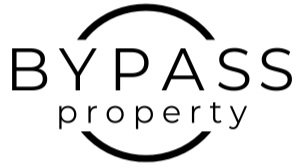Getting started in Property Investment? Don’t do what I did!
The world of property investment in Australia can be a formidable one, especially for those just starting out. I can speak from personal experience. I bought my first investment property when I was 18 years old. I’d been pretty obsessed with the idea of turning my earned income into passive income and creating financial security for my future and decided that investing in property was how I was going to achieve that. I did all the "right" things—I read books, researched the market (well so I thought), and looked at heaps of properties, both online and in person. I felt I was well-prepared, but despite my diligent efforts, I made a couple of classic mistakes: I bought what was familiar, investing locally in the city I knew. And I didn’t pay full attention to all of the additional holding costs that took my rental yield from an appealing one to a very average reality. While I still managed to do well out of the purchase, a few key changes early on would have made holding the property easier and my overall returns much better.
1. Create a Financial Plan and Investment Strategy
Before you start browsing realestate.com.au, you need a clear plan. My initial strategy was simply "buy property that I can hold forever". I’ve gone into this planning previously and so won’t go into detail again here.
What I will say is that knowing your numbers early and getting a clear picture of your borrowing and holding capacity will ensure you can align your purchase with your plan. Make sure you also have a buffer for unexpected expenses and periods of vacancy.
2. Research Opportunities Exist Outside Your Immediate Area
My first investment was in my hometown because it was comfortable and familiar. I was confident I knew the market, but what I didn't see was the immense growth happening in other areas of the country. This is where I should have started instead.
Successful investors are not constrained by geography. They follow the data. They look for areas with strong economic indicators that signal future growth. This is the "macro" research that should come before you even look at a single property.
Initial Research should include:
Economic Indicators: Research areas with rising populations and low unemployment. Upcoming construction projects also bring money into the area so projects like hospitals and universities and public transportation systems can improve an areas potential.
Supply and Demand: Areas with limited available land and few new properties entering the market tend to force prices higher. This coupled high rental demand can boots an areas performance over the long term.
Market Timing: While I’m not a believer in trying to time the markets, property tends to move in cycles, with different areas moving through the different stages of the cycle at different rates. This allows Investors to consider areas where buyers have an advantage and where entry prices are reasonable compared to the long term potential of the area.
My journey into property investment started with a good foundation of knowledge, but a narrow view of the market. I now understand that success comes from a combination of diligent research, a strategic mindset, and a willingness to look beyond your own postcode.
For those just starting out don't let a fear of the unknown hold you back. Make sure you start with a clear, well-thought-out plan and base your decisions on logic and data.
Here’s the crazy part – even though in hindsight I made some common, easy to avoid errors with my first purchase, it still set me up for success far better than if I hadn’t started at all.

